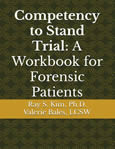All Articles
Accident Investigation & Reconstruction
Hydrology
Alcohol, Tobacco & Other Drugs
Industrial Hygiene and Safety
Appraisal & Valuation
Injury
Archaeology - Archeology
Insurance
Automotive - Vehicular
Insurance Coverage Analysis
Bacteria - Fungus - Mold Investigation
Investigation & Surveillance
Boating
Land Mapping - Surveying - Zoning
Business Management
Laws & Procedures
Child Welfare
Legal Issues
Computers
Marine - Maritime
Counseling
Marketing
Crime Scene Investigation
Medicine
Damages
Metallurgy
Design
Nursing
Documentation Examination & Analysis
Obstetrics - Gynecology (OBGYN)
Education & Schools
Pain Management
Elder Abuse
Pools and Spas (Recreational)
Engineering
Professional Skills
Ethics / Ethical Duties
Psychiatry
Expert Witnessing
Psychology
Feng Shui
Radiology
Finance
Real Estate
Gems & Jewelry
Risk Management
Healthcare
Supply Chain Management
Hotels & Hospitality
Warnings & Labels
More...

PAIN-MANAGEMENT-PAGE ARTICLES MAIN PAGE
. Contact Us if you are interested in having your work published on our website and linked to your Profile(s).
All Articles
Accident Investigation & Reconstruction
Human Resources
Alcohol, Tobacco & Other Drugs
Industrial Hygiene and Safety
Anger Management & Related Issues
Injury
Appraisal & Valuation
Insurance
Aquatics Safety
International Trade
Automotive - Vehicular
Land Use
Bacteria - Fungus - Mold Investigation
Linguistics
Banking
Marketing
Business Management
Medical Malpractice
Child Witch Phenomenon
Meditation
Counseling
Metallurgy
Crime Scene Investigation
OSHA
Crisis Management
Pain Management
Digital / Crypto Currency
Pharmaceuticals
Education & Schools
Professional Malpractice
Elder Abuse
Professional Skills
Energy - Utilities
Public Speaking
Environment
Real Estate
Ethics / Ethical Duties
Recreation & Sports
Expert Witnessing
Sexual Abuse - Molestation - Harassment
Family Issues
Slip, Trip & Fall
Fires & Explosions
Telecommunication
Food & Beverage
Transportation
Foot / Ankle Surgery
Warnings & Labels
Forensic Psychiatry
Yoga
More...
Featured Articles
There are no active articles here at this time. Please use the search bar, try another category, or contact us if you would like to contribute an article.
This Article is unavailable. Contact Us
Search articles by title, description, author etc.
Sort Featured Articles
Featured resources
Deregulatory Takings and the...
by J. Gregory Sidak
Competency To Stand Trial: A Workbook...
by Ray S. Kim, PhD
Identity Theft Prevention
by James A. Blanco
Follow us










